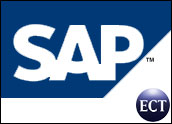
In a sign of the times, last week Salesforce.com introduced a new call and contact center service called Supportforce.com. It appears to be a slick package that includes the hardware and software any company needs to initiate or enhance call center activities right down to voice over IP. Salesforce now joins the ranks of companies such as RightNow Technologies and Siebel Systems in offering on-demand call and contact center applications.
The existence of these services has a much greater potential for reordering the business world than the original services for sales force automation (SFA). To one degree or another, these services remove — or greatly reduce — the complexity of deploying a call center, to the point that new business models are sure to evolve. Some of the implications of this approach to call centers for both businesses and workers are decidedly good news, but as with any innovation, there are some potential gotchas.
Here are a few of the most obvious plusses and minuses.
Cost and Flexibility
No doubt about it, if you don’t need to spend a million bucks or more buying call center gear and software, that’s a good thing. Hosted call centers remove much of that expense. Just as important, they also hide the complexity from the client company. As a result more companies might find that they are potential customers for this further channel of outreach to their customers.
One of the problems with running a large conventional call center is finding people to staff it. Most importantly, those people have to live within a reasonable commuting distance. If you need to hire 500 or a thousand people, you might exhaust the human resources of a small area or pay through the nose to hire those people in a more urban setting, where there is job competition and thus higher wages.
With a hosted approach you can literally hire people to work in their homes and have greater flexibility over hiring practices. There is data to suggest that customer service representatives who work at home are happier and tend to churn less — a win for all sides.
Less Secure Jobs
Over time I expect the benefits of this model to erode as pricing pressures and competition from foreign countries limit the pay and benefits remote call center workers can expect to command. While there is definitely an advantage to having your call center reps speaking in the native dialect, there is also a ceiling on what most employers will be willing to pay. And with the ability of on-demand systems to plant jobs anywhere, that ceiling will be noticeable to all.
That might mean the further erosion of the call center job as the part-time labor pool makes further inroads. In my conversations with some vendors over the last few weeks, it has become apparent to me that pulling a shift as a remote call center agent would be a great job for college students. Think of it: Colleges have pretty good Internet infrastructures these days, and students are fairly smart and can speak a dialect of English. There is no reason why a kid with a computer couldn’t work right from the dorm room — except for the possibility of keeping a roommate up.
Jobs and Training
Perhaps the biggest question to be answered — and the one on which the success of the rest of this model rests — regards training and management. Remote workers can be managed relatively easily if metrics can be put in place and if goal setting and review are an integral part of the process. Modern analytics and dashboards can be used in concert with the integral communications infrastructure these systems provide to enable reasonable oversight. And for these remote workers, hiring practices will be one of the most important management tools — because self-motivated, independent workers will require less management supervision.
But that still leaves training. The old high-tech adage of “garbage in garbage out” will exert a strong influence as companies try to come to grips with the fact that their employees’ minds are the one component that are not wired into the Internet. A company’s approach to training will be governed to a great degree by the services that are — or are not — provided by contact center hosting services. This will ultimately determine the success or failure of this grand experiment in remote — or even detached — work.
The successful remote contact center will need more than the hardware and software to run it, and more than the ability to hire people to do the work. Successful companies working in this space will need to monitor what their employees say to customers and do for them. Most importantly, they will need to use the same infrastructure to deliver customized training to help employees stay up on the company’s latest service and product zigs and zags.
To make a comparison, SFA is successful for the companies that structure their sales processes to optimize how their sales reps use company resources, including time. With the introduction of hosted solutions, the call center is now officially in the market for methods and tools — “call center effectiveness,” perhaps? — that will provide analogous support.
Denis Pombriant is former vice president and managing director of Aberdeen Group’s CRM practice and founder and managing principal of Beagle Research Group. In 2003, CRM Magazine named Pombriant one of the most influential executives in the CRM industry.






















































